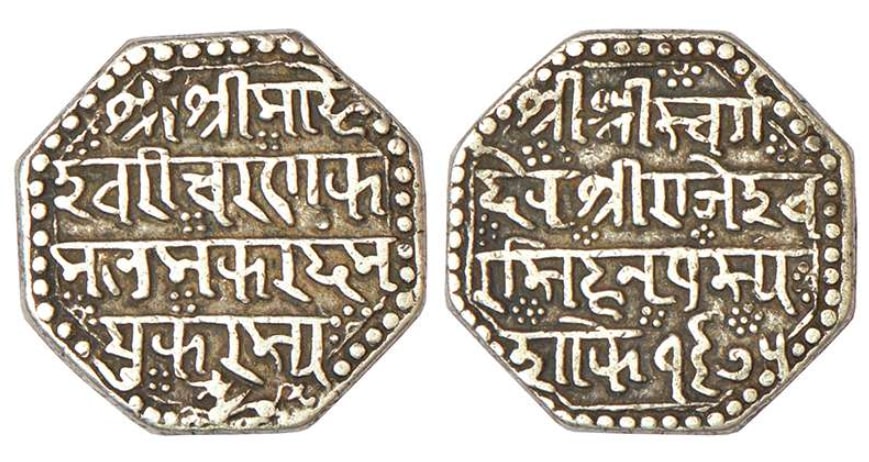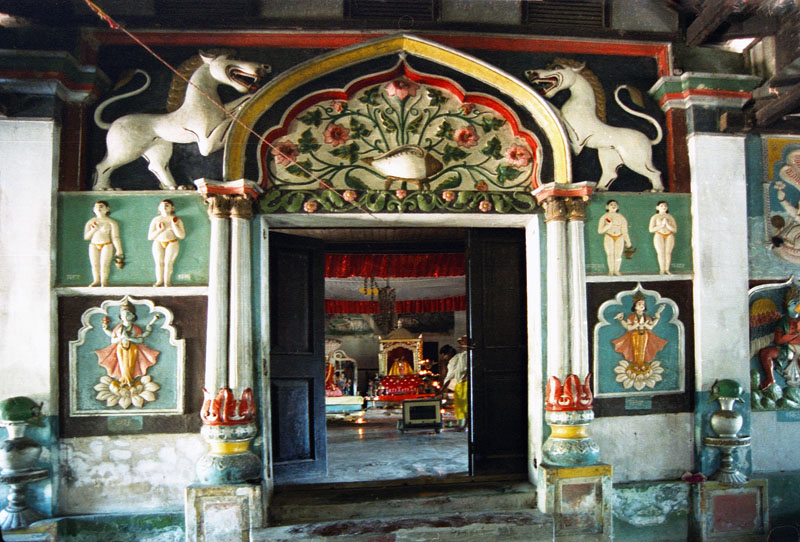|
Paik System
The Paiks or Paik people worked in various system on which the economy of the Ahom kingdom & Mallabhum kingdom of medieval Assam & Bengal depended. In Paik system, adult and able males, called ''paiks'' were obligated to render service to the state and form its militia in return for a piece of land for cultivation owned by the kingdom But it wasn't the Ahom kingdom alone that used a corvee system like this in Northeast India—Kingdom of Manipur and in a simpler form Jaintia kingdom and the Kachari kingdom too used similar systems that had tribal origins. The mature structure was designed by Momai Tamuli Borbarua in 1608, and extensively and exhaustively implemented by 1658 during the reign of Sutamla Jayadhwaj Singha. The system continued to evolve over time to meet the needs of the Ahom state and in time began to accumulate contradictions. By the end of the Moamoria rebellion (1769–1805) the Paik system had collapsed. The Paik system has had a profound impact on Assam's so ... [...More Info...] [...Related Items...] OR: [Wikipedia] [Google] [Baidu] |
Servile Class
Servitude may refer to: Persons * Conscription * Indentured servitude * Involuntary servitude * Penal servitude * Service * Service-oriented submission * Slavery Property * Servitude (Roman law) * Equitable servitude, a term of real estate law * Servitude in civil law A servitude is a qualified beneficial interest severed or fragmented from the ownership of an inferior property (''servient estate'') and attached to a superior property (''dominant estate'') ''or'' to some person (''personal beneficiary'') other t ..., a kind of interest in property Music * ''Servitude'' (album), a 2024 album by the Black Dahlia Murder {{disambig ... [...More Info...] [...Related Items...] OR: [Wikipedia] [Google] [Baidu] |
Borgohain
Borgohain (Ahom language: ''Chao Thao Lung'') was one of the two original counselors in the Ahom kingdom. He was selected by the Ahom king from members of the Ahom nobility (''Satgharia Ahom''), who vowed not to fight for the position of Ahom kingship, rather act as a guide to the Ahom king in matters of administering his province in an efficient manner (King Maker).The other original counsellor is the Burhagohain. Both the positions existed from the time of the first Ahom king, Sukaphaa. After the first major expansion of the Ahom kingdom, the Sadiya province was initially given to the Borgohain to administer. But later in the year 1527, he was replaced by King-lun Buragohain who was made ''Thao-mung Bo-ngen'' (Sadiyakhowa Gohain). After that, he was given the region south of the Dikhou river to Kaliabor on the south bank. In later times, he administered the region east of Burai on the north bank, as Borbarua Borboruah (Ahom language: ''Phu-Ke-Lung'') was one of the five ... [...More Info...] [...Related Items...] OR: [Wikipedia] [Google] [Baidu] |
Burhagohain
The Burhagohain (Ahom language: ''Chao Phrung Mung'') was one of the three original counsellors (Burhagohain, Borgohain and Borpatragohain) in the Ahom kingdom. Selected by the Ahom king from among the members of the Ahom nobility (''Satgharia Ahom''), the Burhagohain vowed not to fight for the position of Ahom kingship, rather act as a guide to the Ahom king in matters of provincial administration in an efficient manner (King Maker). The other original counsellors were Chao Thao Lung or Borgohain and Konsheng or Borpatragohain. Both the positions (Burhagohain & Borgohain) existed from the time of the first Ahom king, Sukaphaa. But the third position, Borpatragohain, was appointed by Suhungmung Dihingia Raja in 1527. During the rule of Suhungmung, the Burhagohain was assigned to administer the Dihing province (the region north of the Dikhow river up to Tinsukia). Later, he was made in-charge of the region between Sadiya province and Gereluwa river ( Dikrong) on the north bank of ... [...More Info...] [...Related Items...] OR: [Wikipedia] [Google] [Baidu] |
Phukan
Phukan or Phookan or Phukon () is a surname of assamese origin and a Paik officer. Now the descendants' clans use it as a surname. This is usually used among the people of Assamese origin and others. Notable Persons * Anandaram Dhekial Phukan (1829–1859), one of the pioneers of Assamese literature in the Arunodoi era * Anup Phukan, Indian politician * Ayush Phukan, Indian singer *Babul Phukan Babul Phukan (1 May 1968 – 14 December 2013) was a former Indian Association football, footballer from Assam. Playing career Early career Born at Chakalibhoria village near Panitola in Tinsukia district of Assam, Phukan came from a football ... (1968–2013), former Indian footballer from Assam * Bastab Deodhai Phukan, the chief of ULFA's Enigma Force and also a commander of the outfit's 28th battalion * Bhadra Phukan, Freedom fighter, Leader of 2942's Sarupathar train derailment activity and school friend of Kushal Konwar * Bhrigu Phukan, leader of Asom Gana Parishad and a cabin ... [...More Info...] [...Related Items...] OR: [Wikipedia] [Google] [Baidu] |
Bora (surname)
Bora, also spelled Borah or Barah, is an Assamese surname used commonly throughout Assam. Historical usage Originally, the ''Bora'' surname was used as a high military position/title in the Chutia Kingdom held by individuals from the ''Buruk'' clan. The officials were collectively termed as ''Bora-Buruk''. The officials '' Barua'' and ''Borpatra'' also formed a part of this system. There were originally two classes of ''Bora'' officials - one involved in administration (''Sashanar Bora'') and the other involved in temple security (''Thanar Bora''). Some examples of that era include Dhela Bora and Harisingh Bora who were Chutia officials. Later, after the introduction of the Paik system in the Ahom Kingdom of medieval Assam, the title was re-introduced. A ''Bora'' was the commanding officer of 20 such paiks. The appointment of a ''Bora'' was the responsibility of his ''Phukan'' or ''Rajkhowa'' (governor of a territory). The paiks had the right to reject a Bora and request anoth ... [...More Info...] [...Related Items...] OR: [Wikipedia] [Google] [Baidu] |
Lachit Borphukan
Lachit Borphukan (24 November 1622 – 25 April 1672) was an army general, primarily known for commanding the Ahom Army and the victory in the naval Battle of Saraighat (1671) that thwarted an invasion by the vastly superior Mughal Forces under the command of Ramsingh I. He died about a year later in April 1672."Lachit Barphukan, who had literally staked his life and honour, soon died at Kaliabar, April 1672..." There is keen contemporary interest in Lachit Borphukan today—he has emerged as a powerful symbol of Assam's historical autonomy. Biography Lachit was youngest born to Momai Tamuli Borbarua, a commoner who rose to the rank of Borbarua under Pratap Singha and Nang Lacheng Aaideu (). His sister was Pakhari Gabhoru, a queen to the Ahom kings Jayadhwaj Singha, Chakradhwaj Singha and Samaguria Raja, and his niece was Ramani Gabharu, the Ahom princess who was given to the Mughals as part of the Treaty of Ghilajharighat. A few Buranjis give some details on Lac ... [...More Info...] [...Related Items...] OR: [Wikipedia] [Google] [Baidu] |
Rajeswar Singha
Suremphaa (reign 1751–1769), or Rajeswar Singha, the fourth son of Rudra Singha, became the Ahom Dynasty, king of the Ahom kingdom after the death of his brother King Pramatta Singha. Rudra Singha's third son, Mohanmala Maladev Gohain, Mohanmala Gohain, was considered ineligible for kingship as his face was pitted with smallpox marks. According to the norm established after Sulikphaa Lora Roja, an Ahom prince had to be free from any physical disability, defects or deformities to become a king. The new king was installed with the usual ceremonies. His first act was to exile his brother Mohanmala Maladev Gohain as the Raja of Namrup. During his installation as king, there was a conflict of opinion about the location of the capital between the Deodhais (Ahom priests) and the Hindu astrologers, the former recommended Taimung and the latter Rangpur (Ahom capital), Rangpur. The king took the advice of the Hindu Astrology, astrologers and built his palace at Rangpur, but afterwards, h ... [...More Info...] [...Related Items...] OR: [Wikipedia] [Google] [Baidu] |
Suhungmung
Suhungmung (), or Dihingia Roja was one of the most prominent Ahom Kings who ruled at the cusp of Assam's medieval history. His reign broke from the early Ahom rule and established a multi-ethnic polity in his kingdom. Under him the Ahom Kingdom expanded greatly for the first time since Sukaphaa, at the cost of the Chutia and the Dimasa kingdoms. He also successfully defended his kingdom against Muslim invasions, first by a general called Bar Ujjir and another by Turbak Khan. During his time, the Khen dynasty collapsed and the Koch dynasty ascended in the Kamata kingdom. His general, Ton-kham, pursued the Muslims up to the Karatoya river, the western boundary of the erstwhile Kamarupa Kingdom, the farthest west an Ahom military force had ventured in its entire six hundred years of rule. He was the first Ahom king to adopt a Hindu title, Swarganarayana, indicating a move towards an inclusive polity; and Ahom kings came to be known as the ''Swargadeo'' (literal meani ... [...More Info...] [...Related Items...] OR: [Wikipedia] [Google] [Baidu] |
Buranji
Buranjis (Ahom language: ''ancient writings'') are a class of historical chronicles and manuscripts associated with the Ahom kingdom. There were written initially in the Ahom Language and later in the Assamese language as well. The Buranjis are an example of historical literature which is rare in India—they bear resemblance to Southeast Asian traditions of historical literature instead. The Buranjis are generally found in manuscript form (locally called ''puthi''), a number of these manuscripts have been compiled and published especially in the Assamese language. They are some of the primary sources of historical information of Assam's medieval past, especially from the 13th century to the colonial times in 1828; and they have emerged as the core sources for historiography of the region for the pre-colonial period. The details in the Buranjis regarding the Ahom-Mughal conflicts agree with those in the Mughal chronicles such as '' Baharistan'', '' Padshahnama'', ''Alamgirna ... [...More Info...] [...Related Items...] OR: [Wikipedia] [Google] [Baidu] |
Sattra
''Satra'' are institutional centers associated with the '' Ekasarana'' tradition of Vaishnavism, largely found in the Indian state of Assam and neighboring regions. Numbering in the hundreds, these centers are generally independent of each other and under the control of individual ''adhikara'' (or ''satradhikar''), though they can be grouped into four different ''Sanghati'' (orders). These centers, in the minimum, maintain a prayer house ('' Namghar'', or '' Kirtan-ghar''), initiate lay people into the ''Ekasarana'' tradition and include them as disciples of the ''satra'' from whom taxes and other religious duties are extracted. The Vaishnavite satra culture started in the 16th century. They grew rapidly in the 17th century and patronage extended to them by first the Koch kingdom and later the Ahom kingdom was crucial in the spread of the Ekasarana religion. Many of the larger Satras house hundreds of celibate and non-celibate ''bhakat'' (monks), hold vast lands and are rep ... [...More Info...] [...Related Items...] OR: [Wikipedia] [Google] [Baidu] |
Usufruct
Usufruct () is a limited real right (or ''in rem'' right) found in civil law and mixed jurisdictions that unites the two property interests of ''usus'' and ''fructus'': * ''Usus'' (''use'', as in usage of or access to) is the right to use or enjoy a thing possessed, directly and without altering it. * '' Fructus'' (''fruit'', as in the fruits of production) is the right to derive profit from a thing possessed: for instance, by selling crops, leasing immovables or annexed movables, taxing for entry, and so on. A usufruct is either granted in severalty or held in common ownership, as long as the property is not damaged or destroyed. The third civilian property interest is ''abusus'' (literally ''abuse''), the right to alienate the thing possessed, either by consuming or destroying it (e.g., for profit), or by transferring it to someone else (e.g., sale, exchange, gift). Someone enjoying all three rights has full ownership. Generally, a usufruct is a system in which a person or ... [...More Info...] [...Related Items...] OR: [Wikipedia] [Google] [Baidu] |

